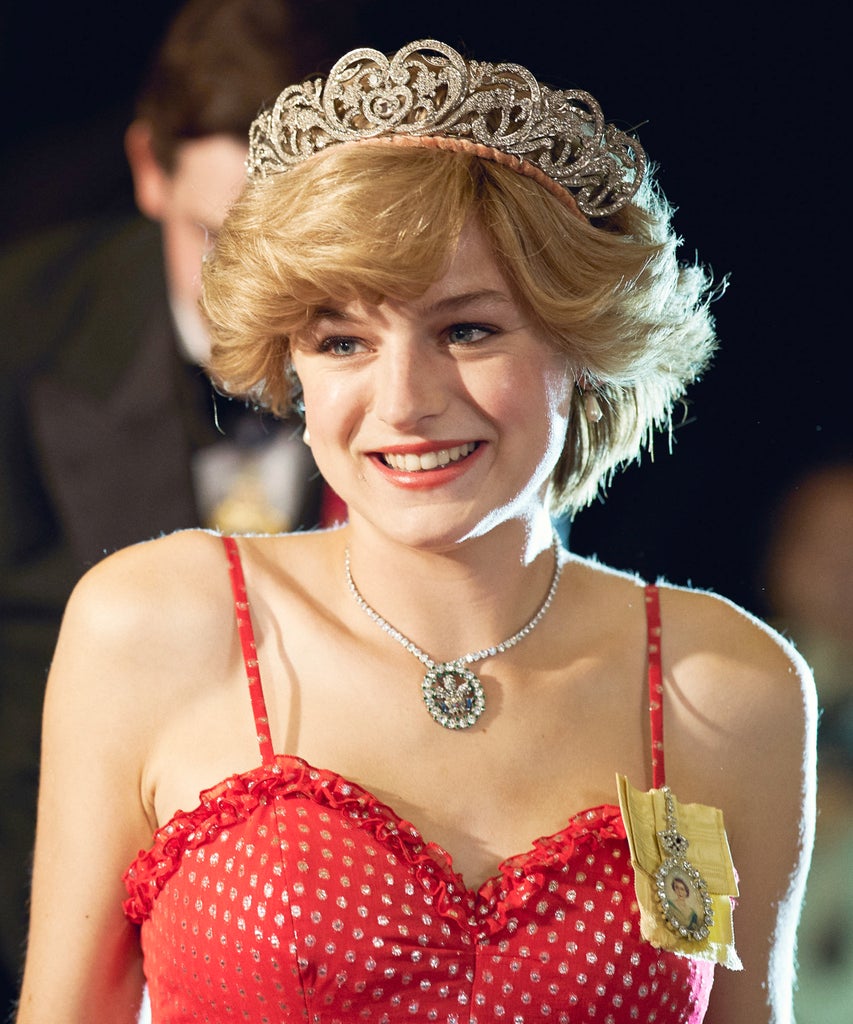
It’s the moment most fans have been waiting for since Netflix’s historical series first premiered: Princess Diana has finally arrived on The Crown. Though many viewers may think they know everything about her doomed romance with Prince Charles, The Crown delves into moments that may surprise even the most devoted Diana followers. But The Crown is still a story centered on Queen Elizabeth, so the Prince and Princess of Wales’ marriage story is far from the only drama we’ll encounter in The Crown season 4.
When the Emmy-winning series last left us, back in season 3, it was 1977 and Prince Charles’ (Josh O’Connor) romance with Camilla Shand (Emerald Fennell) had just been pried out of his hands by his meddling uncle and grandmother. They helped ensure that Camilla would marry Andrew Parker-Bowles (Andrew Buchan) and that Prince Charles would be overseas with the navy and unable to stop the wedding.
Season 4 picks up in 1979 when Charles first meets Diana (Emma Corrin), before launching directly into the ‘80s, when Charles’ and Diana’s courtship turned into their marriage, the birth of Prince Harry and Prince William, and their relationship’s slow, painful demise. While the series has always been fascinating, this season delves into one of the most interesting periods in royal history — with the possible exception of Prince Harry and Meghan Markle’s 2020 exit from the monarchy.
It’s going to be a bumpy ride, but let’s dive right in.
Episode 1: “Gold Stick”
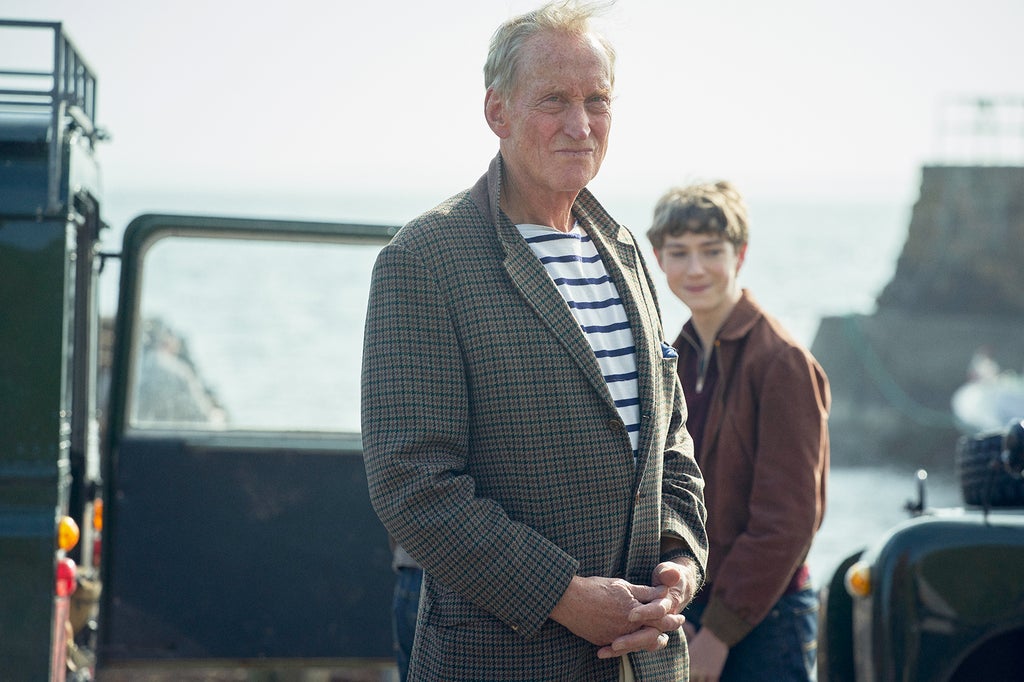
It’s 1979 and Margaret Thatcher (Gillian Anderson) has just been elected Britain’s first female prime minister. The Queen (Olivia Colman) seems kind of excited about this at first, but her excitement fades somewhat when Thatcher says that she doesn’t think women are “suited” for high positions, because they’re too emotional. It’s an odd thing to say as a woman in a high position speaking to another woman in a high position. But while Thatcher broke a glass ceiling, she wasn’t interested in pulling anyone else up with her. And she most certainly wasn’t a feminist.
Within the royal family, Prince Charles has begun dating Diana’s sister Sarah Spencer (Isobel Eadie), which is actually how he meets Diana, who is then just 16 years old. However, he’s still seeing Camilla Parker-Bowles on the side, despite the fact that she’s now married. Most of the royals are disappointed in Charles, but only his pseudo-father Lord Mountbatten aka “Uncle Dickie” (Charles Dance) is willing to call him on it. He pens a letter to Charles, instructs a footman to deliver it, and goes lobster fishing with his grandsons.
But Dickie never makes it back to shore. His fishing boat explodes, after a bomb on board is detonated by members of the Irish Republican Army (IRA), who are seeking independence from Britain. The members of the IRA assassinated Dickie as well as 18 British servicemen in response to the Bloody Sunday massacre of 1972, in which British soldiers shot 26 unarmed protestors in Derry, Northern Ireland.
The plot against Dickie prompts Thatcher to promise the Queen she will swiftly deliver justice to Ireland and the IRA — Northern Ireland is, to this day, part of the UK. In real life, the bomb killed Dickie as well as three others onboard. One of the victims was Dickie’s grandson Nicholas, whose twin brother Timothy survived. Timothy went on to write a book about the day, titled From a Clear Blue Sky.
After the tragedy, Prince Charles receives the letter that Dickie wrote before his death. It’s basically this note that sets into motion Charles’ eventual relationship with Diana. Dickie implored Charles to remember his duty and to find a “sweet and innocent well-tempered girl, with no past, who knows the rules and will follow the rules.” Because Dickie was like a father to him, Charles seems resolute to follow through on Dickie’s final request. Charles remembers Diana, the sweet younger sister of Sarah Spencer and decides to make a go of it, thinking she will be the perfect “sweet and innocent” rule-follower that Dickie wanted for him.
The show does an excellent job of highlighting Diana’s innocence, born out of the fact that she was an actual child when she and Charles first met. She was just 16 then, and the series makes sure to mention that Diana was still in school at the time — highlighting the age difference by introducing the two while Diana is still in her nymph costume from her school play. And when the two later meet at a horse racing event, she’s wearing yellow overalls and a floral sweater that continue to emphasize just how much younger she is than Charles. She was just 19 when they got engaged, 12 years younger than Charles. But while the series makes it known at every turn, Diana and Charles’ age difference didn’t seem to matter much to Charles or the rest of the royal family.
History is set in motion on The Crown when Charles telephones Diana’s sister Sarah — who, again, he previously dated — and asks if he can take Diana out. Sarah is quite obviously (and rightfully) annoyed that Charles has decided to date her sister instead of her, but she gives him permission to do what she knows he’ll do anyway. The episode ends with Diana meeting him for their first date, sealing what will ultimately be her very tragic fate.
Episode 2: “The Balmoral Test”
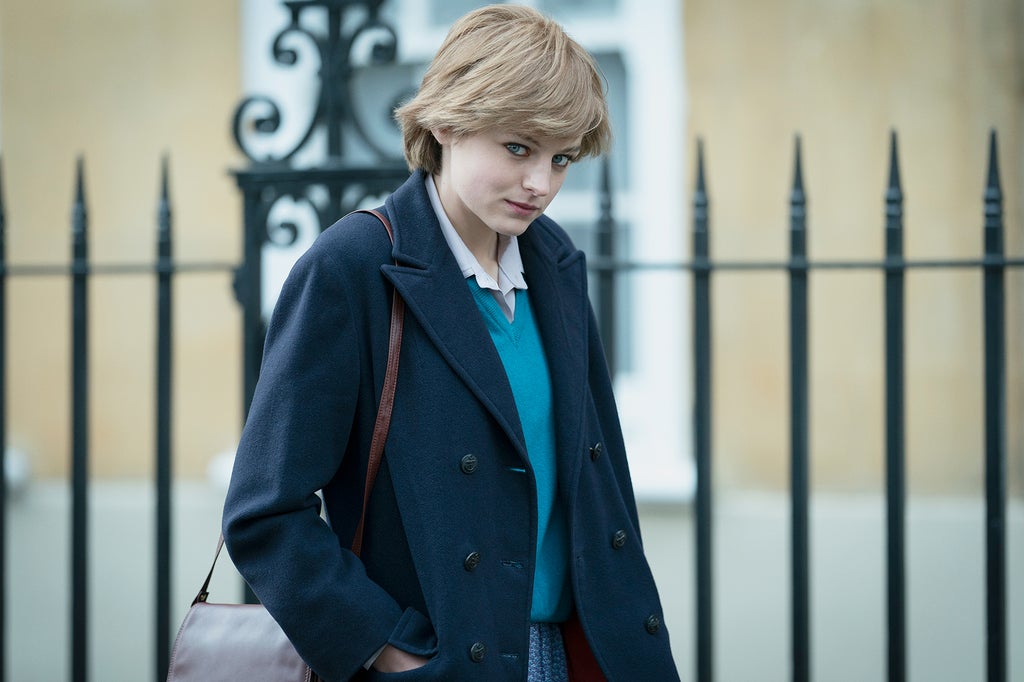
We open with the royals at their country castle Balmoral in Scotland. They learn that a large deer has been shot and wounded by a neighbor and is now wandering around the estate, so naturally, they all want to be the first to kill it. The deer spends much of the episode wandering around, wounded — a metaphor large enough to knock you out. It’s not subtle, but it is sad.
Anyway, Margaret Thatcher is on her way to Balmoral with her husband Denis Thatcher (Stephen Boxer). She complains that she feels patronized by the all-male cabinet she’s working with, and they don’t agree with her vast spending cuts. But Denis can’t stop talking about how the royal family supposedly tests their guests with challenges to determine whether they pass muster or not. The Thatchers quickly fail the first “test” when they dress far too early for dinner and are flummoxed by having to sleep in separate rooms like the Queen and Philip do. Margaret also can’t get into the fun mood of the trip, as she’s worried about all the work she’s missing. Later, she really blows the test when she dresses in a bright blue dress and heels for the hunting trip.
That last faux pas makes the Queen even less interested in being kind to Margaret, largely because the royals worry Margaret will scare off their beloved deer. Later, as she watches a Highland Games ceremony, Margaret complains to Denis that the royals are “boring, snobbish, and rude.” She says the country needs to be changed from top to bottom so a certain class doesn’t make all the rules anymore. Having fully run out of patience, she cuts her holiday short and heads home to deal with work. Back in London, she abruptly fires three of her cabinet members (as she also did in real life). It’s clear we’re witnessing the birth of the infamous Iron Lady, when she tells the Queen she doesn’t mind making enemies.
Meanwhile, Charles wants to invite Camilla to Balmoral, but she knows that’s extremely inappropriate so she suggests that Charles call Diana instead. He and Diana have been on a couple of chaperoned dates, but it’s clear Charles has no interest in Diana. That’s uncomfortable enough on its own, but then there’s also the massive power imbalance on account of their age difference and the fact that Diana has to curtsy to him because he outranks her as crowned prince. But after Camilla does all the work for him, telling him exactly what to say on his phone call to Diana, Charles does invite her to Scotland, where Diana is then put through the same wringer as Margaret was just days before.
Unlike the prime minister, however, Diana passes with flying colors. She charms the royals at dinner with her self-effacing jokes and eventually, she seals the deal by helping Prince Philip shoot the deer when she correctly notes which way the wind is blowing.
The whole family loves her, but it’s painfully obvious that Charles doesn’t. “You’ve been a great sport,” he says to her at the end of the trip with a chaste (and perhaps passive aggressive) pat on the shoulder. He telephones Camilla to complain that Diana is “a child,” but he can clearly see the direction things are heading. Charles’ sister Anne (Erin Doherty) tells him that Diana is perfect and that it’s time to close his chapter with Camilla. For his part, Philip in tells Charles, in no uncertain terms, to marry Diana as they’re both actively skinning the deer. Charles clearly sees himself as the deer — in case it wasn’t incredibly clear — because the life is being sucked out of him by his own family. But the larger picture would suggest that Diana is actually the deer, as she begins to be stalked and targeted by the press at the end of the episode, sacrificed by the royals who’ve decided her fate for her.
Episode 3: “Fairytale”
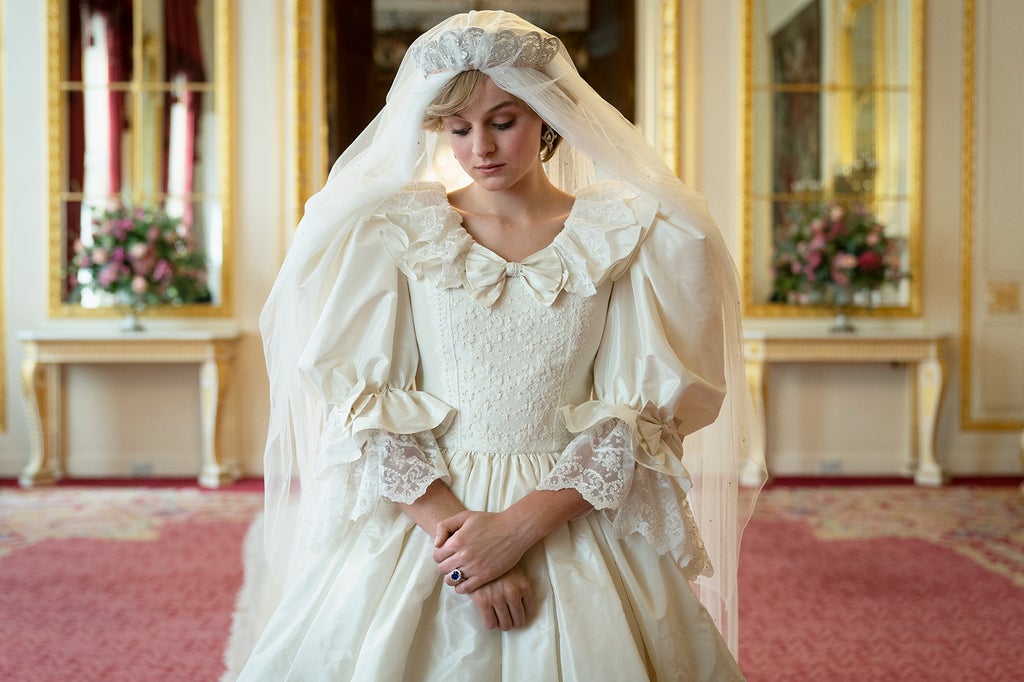
This episode begins with a trigger warning: as Diana becomes a princess, we begin to learn of her more private battles, including her eating disorder. Diana quietly struggled with bulimia for much of her life, eventually opening up about it to author Andrew Morton for the book Diana: Her True Story — in Her Own Words.
History is moving swiftly along and Charles is now engaged to Diana. But while most non-royals would assume that getting engaged to a prince is a sweeping, romantic moment, reality is a bit harsher: Charles doesn’t get down on one knee to propose because of his higher rank. In case you didn’t already know, it’s now clear this marriage is going to be great. After the proposal, Charles sends Diana back to London by herself, where she’s forced to endure the swarms of press outside her apartment. She also begins what are essentially “princess lessons” so she can learn all the royal protocols. We watch as she fails at the apparently all-important practice of curtseying to her royal family, and gets the order all wrong during a dinner party. Charles is quick to remind her who she should curtsy to first, as if all this pomp and circumstance really matters. Rank is one of the few things these people have in their lives, and they’re desperate to hold onto it.
If you needed more evidence that Charles and Diana were doomed from the start, it comes during a press interview about their recent engagement. A reporter asks if the pair is in love, and Diana says of course they are. Charles callously adds, “Whatever ‘in love’ means.” He actually said that. It’s a real, well-documented quote.
After that charming interaction, Charles leaves Diana again to go on a six week tour of Australia, but he at least has the decency to move Diana into the palace so she’s not bombarded by reporters. He suggests that if she gets lonely, she can reach out to Camilla, because she’s great company. Diana is taken aback by the comment because it certainly sounds like Charles is still hanging out with his married ex-girlfriend. Oh, Diana. If only you knew.
While Charles is gone, Diana grows more and more lonely in the palace. Her fiancé won’t answer her phone calls and neither will the Queen. She turns to binging desserts from the kitchen late at night. Eventually she gets so bored that she does call Camilla and the two have lunch (this also really happened). But it doesn’t cheer Diana up, as Camilla goes on and on about all the things she knows about Charles — all things that Diana doesn’t. But it’s not really Diana’s fault that they’re strangers. They haven’t spent any meaningful time together. In real life, the couple only met 13 times before their wedding day.
Back at the palace, Diana finds sketches Charles had drawn up of a bracelet with his and Camilla’s code names — Fred and Gladys — inscribed on it. She again tries to reach the Queen to stop her impending wedding to Charles, who she now knows is still very much in a relationship with Camilla. “It will be a disaster for everyone,” she tells the Queen’s aide, but the Queen is, as always, unavailable to speak to her. In his Diana biography, Andrew Morton wrote that Diana really did want to call off the wedding after learning that Camilla and Charles exchanged gifts days before the ceremony, but her sisters reportedly said she couldn’t because her face was already all over merchandise like tea towels.
When Charles finally returns home from Australia, he heads straight to Highgrove to see
Camilla instead of going to the palace to see his betrothed. The wedding rehearsal is the first time Diana’s seen Charles in six weeks, an opportunity she uses tells him that she knows about Camilla. Still, Charles insists that the bracelet was a “we’re over” gift — a thing that shouldn’t, and also doesn’t exist — and he gives Diana a ring. Apparently, that’s enough to make her forgive him for now.
But the cracks in the relationship are becoming obvious to others and Princess Margaret (Helena Bonham-Carter) notices Charles and Diana acting strange at the rehearsal. She immediately knows this means that Charles is still in love with Camilla and implored the Queen and Prince Philip to stop the wedding. It’s not known if this conversation happened in real life, but if it did, Margaret would have been speaking from experience. She knew better than anyone what it was like to be torn away from true love and forced to marry someone more “suitable” — her forced relationship ultimately ended in divorce and she knows that’s where Charles and Diana are headed.
After hearing Margaret out, the Queen completely ignores her wishes and meets with Charles to remind him of his duty. That duty is apparently to enter a doomed, loveless marriage so that British citizens can continue to idolize and trust the monarchy as a stable national symbol. That’s the Queen’s reasoning, but after having watched what Margaret went through, it’s unclear why anyone is being put through this pain.
The episode closes moments before Charles and Diana’s wedding, which was watched by people all over the world. Rather than showing us the glamorous wedding that TV cameras gobbled up, we watch as Charles and Diana, both filled with dread and uncertainty, get ready for the event.
Episode 4: “Favourites”
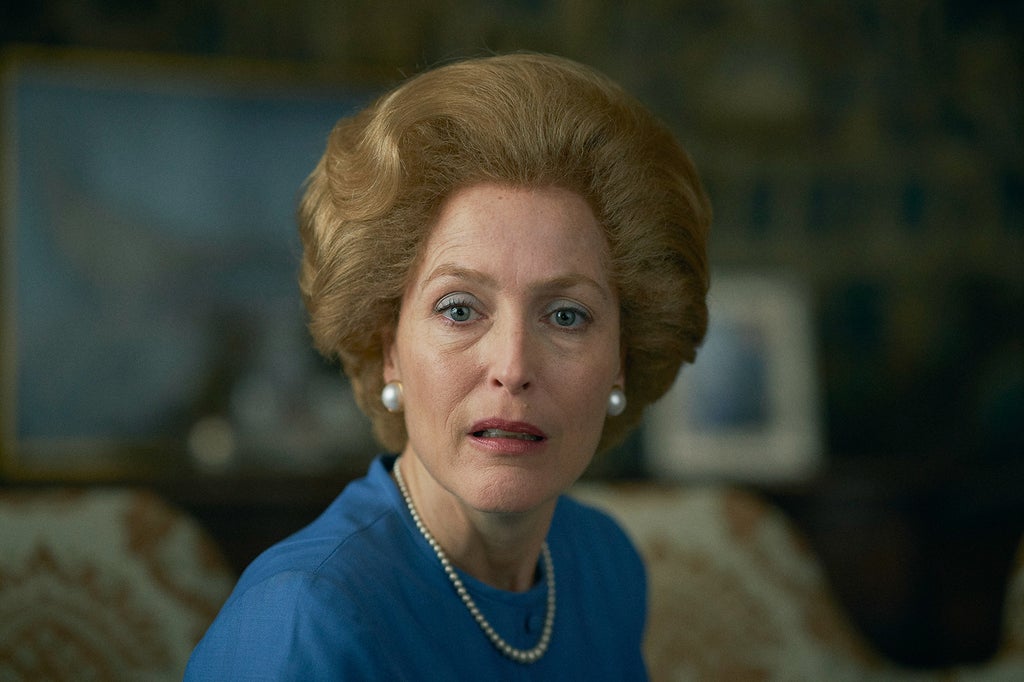
Every parent has a favorite child, including Margaret Thatcher, whose favorite son Mark Thatcher (Freddie Fox) went missing in 1982. The race car driver disappeared during the Paris-Dakar rally, vanishing into the Saraha desert. Mark and his teammates were missing for six days before a rescue pilot located them. When Mark returns home, his mother lavishes him with attention, deeply annoying Mark’s twin sister Carol (Rebecca Humphries). She eventually calls her mother out on not having good relationships with women, blaming it on Margaret’s rough history with her own mother. Margaret says she didn’t respect her mother because she was “weak” and only wanted to be a housewife. Again, that’s not feminism.
According to the Independent, it’s true that Maragaret and her mother Beatrice Roberts had a strained relationship. Margaret never even mentioned Beatrice in her memoir, though she lavished over stories about her father. The Independent noted that Maragret once said of her mother, “I loved her dearly, but after I was 15 we had nothing more to say to each other.”
After learning from Margaret that Mark was her favorite child, the Queen asks Philip if he has a favorite amongst their four children. Without skipping a beat, Philip says that Princess Anne is his. The Queen says she doesn’t think she has one, but just in case Phillip is right, she arranges individual formal meetings with her kids to determine if she does have a favorite.
During her meeting with Prince Edward (Angus Imrie), she learns that he’s being picked on by his classmates and has turned to enforcing the law as head boy out of revenge. He also says it’s going to be easy for him to go to any college he wants because he’s a royal. The Queen is visibly uncomfortable with his obnoxiously privileged attitude. So it’s not Edward.
Next up is Princess Anne, whom the Queen takes riding in the country. Anne complains that she’s always being compared to Princess Diana. The Queen also mentions Anne’s deteriorating marriage and the rumors that she’s been unfaithful with her protection officer Peter Cross. The Queen says she’s having him transferred, which upsets Anne. She explains to the Queen that she’s angry and unhappy all the time, and the Queen unhelpfully remarks that “it will pass.” Anne storms off, feeling misunderstood, and it seems we can check Anne off the list.
Then it’s time for her meeting with Prince Andrew (Tom Byrne), who arrives by landing a helicopter on the palace grounds to make an “entrance.” He and his mother talk about his relationship with American actress Koo Stark, which he’s not really taking all that seriously. (Despite all the fanfare around Markle’s profession, it turns out Prince Harry wasn’t the first royal to be charmed by an actor from the States.) Still, Andrew wins over the Queen somewhat by highlighting that he’s all about his duty to the Crown, and he even compliments her salmon, which Edward had mocked in his meeting with their mother.
For her test — I mean meeting — with Charles, the Queen visits him at his Highgrove house where a very pregnant Princess Diana has locked herself in her room. Charles calls her “pathetic,” which is not exactly doting father-to-be behavior. He later complains to the Queen about Diana, but she calls him out for being selfish and still seeing Camilla. There’s a moment after she leaves where it looks like Charles might take the Queen’s advice to be more present in Diana’s life, but instead he turns away from her bedroom door and goes off to be alone. So this marriage is still going just swimmingly.
After completing her research, the Queen is less sure that she has a favorite and more convinced that all of her children are lost. “What does that say about us as parents?” she frets to Prince Phillip, remembering how often she let the nanny step in for her. Philip says she can’t blame herself, their children are adults now and in charge of fixing their own lives.
But while British leadership is hung up on all this favorite child nonsense, a skirmish arises in the Falkland Islands, a British territory, when a group of scrap metal workers raise an Argentinian flag and declare the land to be theirs. This will eventually lead to the 1982 Falkland War, which was also started simply by metal workers raising a flag. When Argentinian officials hear about the incident, they threaten to send missiles to the island, and Margaret Thatcher, fresh off almost losing her son, decides she will not lose the Falklands either. Despite warnings from her fellow government leaders that the cost will be enormous, she decides to take the Falklands back anyway, and the episode ends with a naval ship on its way to war. In real life, the Falklands War lasted just a handful of months in 1982, but 256 British lives would be lost in the conflict.
More to come. Check back for the full season 4 recap on Nov. 20.
Like what you see? How about some more R29 goodness, right here?
Tensions Run High In New Trailer For "The Crown"
How Emma Crown Did Her Research "For The Crown"
Netflix Has A Brand New Princess Diana Show Coming
from Refinery29 https://ift.tt/3lC2K5a
via IFTTT
